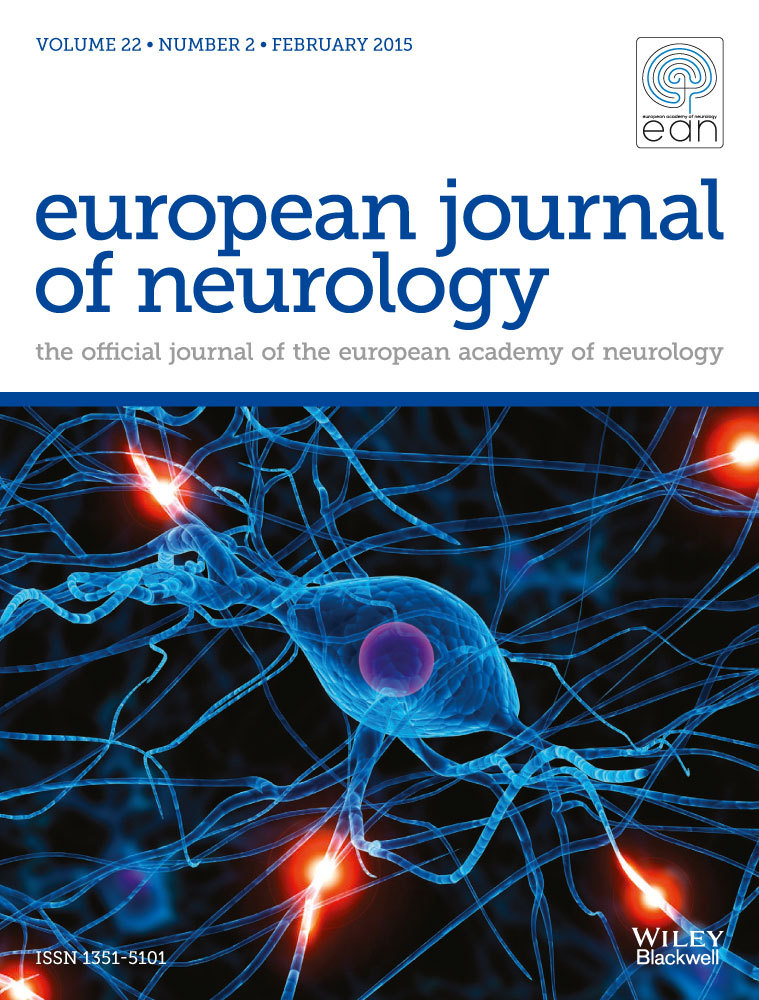Action tremor in Parkinson's disease: frequency and relationship to motor and non-motor signs
This is a Continuing Medical Education article, and can be found with corresponding questions on the Internet at: http://www.efns.org/EFNSContinuing-Medical-Education-online.301.0.html. Certificates for correctly answering the questions will be issued by the EFNS.
Abstract
Background and purpose
Action tremor may occur in patients with Parkinson's disease and cause misdiagnosis with other movement disorders such as essential tremor and dystonia. Data on the frequency of action tremor in Parkinson's disease and on the relationships with other motor and non-motor signs are limited.
Methods
A cross-sectional study of 237 patients with Parkinson's disease staging 1–2 on the Hoehn−Yahr scale was conducted. Data on action tremor and other motor and non-motor signs were collected using the Unified Parkinson's Disease Rating Scale part III and the Non-Motor Symptoms Scale.
Results
Action tremor was found in 46% of patients and was associated with both severity of rest tremor (adjusted odds ratio 3.0, P < 0.001) and severity of rigidity (adjusted odds ratio 1.5, P = 0.004). No association was found between action tremor and severity of bradykinesia (adjusted odds ratio 0.97, P = 0.4) or axial symptoms (adjusted odds ratio 0.9, P = 0.3). Moreover, patients who had action tremor reported a significant lower mean number of non-motor symptoms than those who had not (2.1 ± 1.3 vs. 2.4 ± 1.3; P = 0.04).
Conclusions
Action tremor is a relatively frequent motor sign in patients with Parkinson's disease staging 1–2 on the Hoehn−Yahr scale. Action tremor correlates with rest tremor and rigidity and may be associated with a lower burden of non-motor symptoms. These findings suggest a contribution of non-dopaminergic mechanisms to action tremor pathophysiology.




